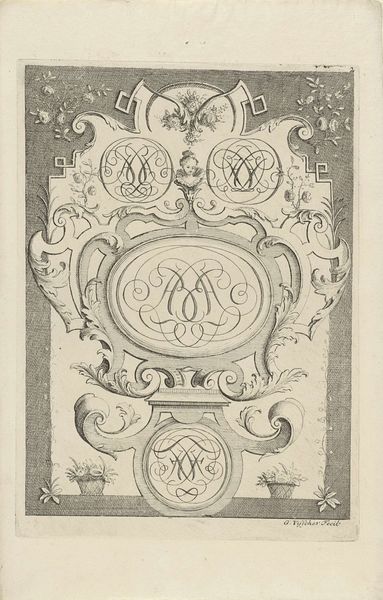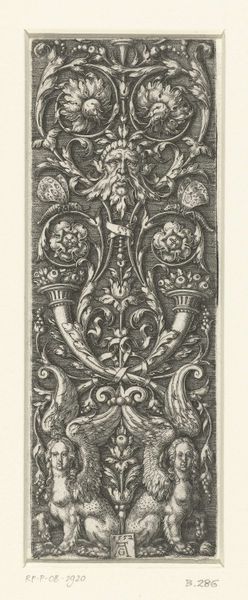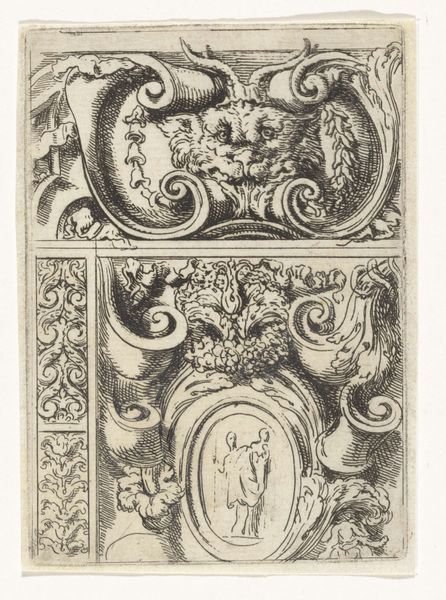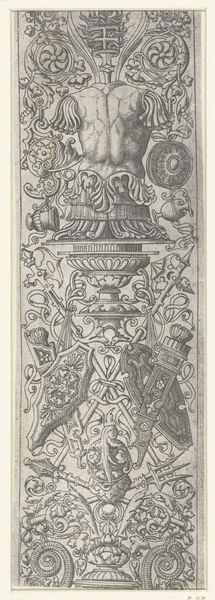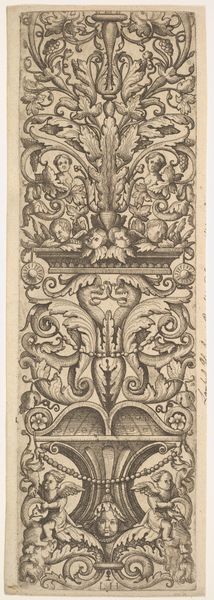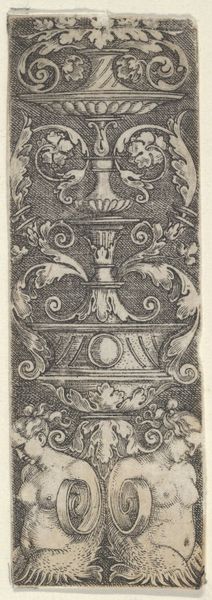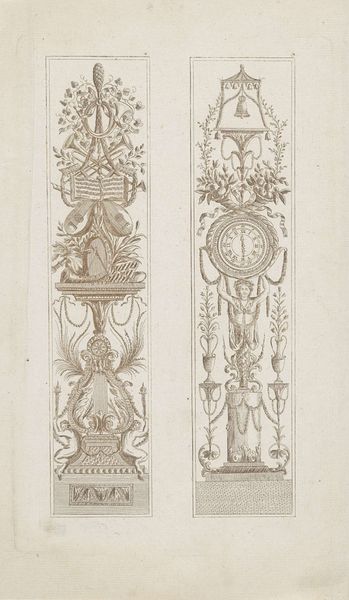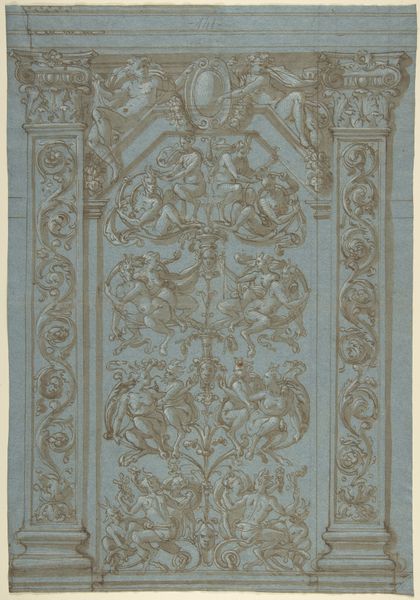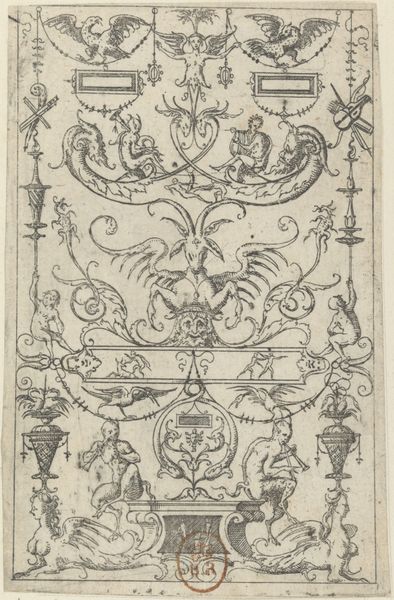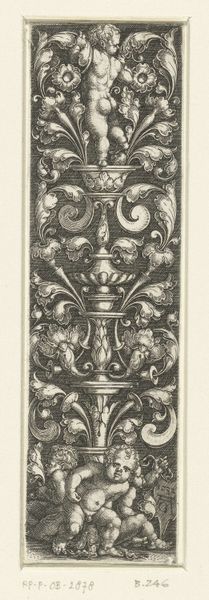
Candelabra grotesque with four children with a cat and a dog, from a series of twelve candelabra grotesques 1490 - 1515
0:00
0:00
drawing, print, engraving
#
drawing
# print
#
dog
#
old engraving style
#
figuration
#
form
#
11_renaissance
#
child
#
line
#
decorative-art
#
italian-renaissance
#
engraving
Dimensions: Sheet: 21 5/8 × 3 5/8 in. (55 × 9.2 cm) Plate: 21 3/16 × 3 7/16 in. (53.8 × 8.7 cm)
Copyright: Public Domain
Curator: This engraving, dating from 1490 to 1515, is called "Candelabra grotesque with four children with a cat and a dog," and is part of a series of twelve such works by Giovanni Antonio da Brescia. Editor: Grotesque, indeed! The texture feels almost frantic, doesn’t it? The density of line work—all that crosshatching—suggests feverish, skilled labor. I wonder what drove this intensity. Curator: These “grotesques” were popular during the Renaissance, drawing on ancient Roman decorations. They were meant to evoke a sense of wonder, even playful disorientation. See how the candelabra form is interwoven with figures and fanciful ornamentation? The cat and dog down at the bottom soften the visual texture. Editor: The “playful disorientation” you describe could also reflect a culture absorbing the shock of new materials and technologies. Was this reproductive print intended to popularize new designs in metalwork? Think of the craftspeople and their access to such images, or even the commodification of the very idea of "grotesque" design. Curator: That's interesting. It brings me to consider how these hybrid creatures—part-human, part-foliage, and animal—tap into a deep-seated fascination with transformation, a recurring motif in mythologies worldwide. Editor: Exactly! The print allows this elite aesthetic to trickle down. How did this new, replicable visual language shape people’s relationship to status and skill, consumption and desire? It seems like Giovanni’s skillful hand wasn't just for beauty's sake, but for market appeal. Curator: Certainly. The piece speaks to a culture fascinated with symbolic inversions and playful ornamentation, reflective of human attempts to engage with their own anxieties. This also reminds us that the history of ornamentation mirrors the ongoing attempt to reconcile natural order and human intervention. Editor: A dialogue embodied by material processes! Looking at it this way, I realize how potent visual representation can be to express both creation and control.
Comments
No comments
Be the first to comment and join the conversation on the ultimate creative platform.

